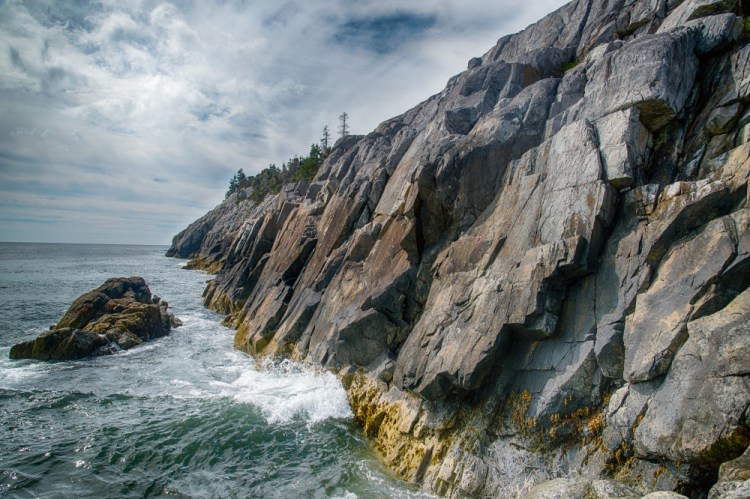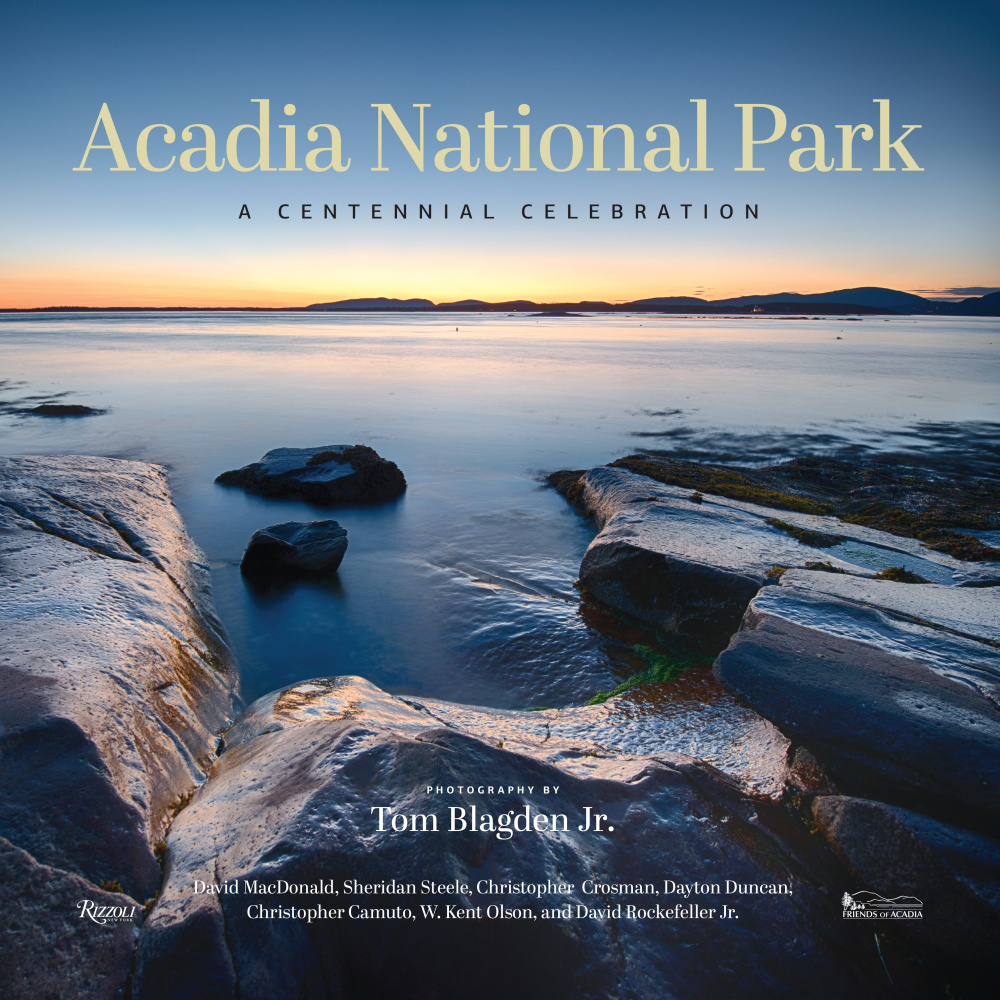The natural beauty and serenity of Acadia National Park is inspiring. The evidence lies not only in the millions of people who visit but in all the books, essays, paintings, photographs and poetry the place has spawned.
This year is the 100th anniversary of Acadia’s founding – as Sieur de Monts National Monument – and a good time to look at some of the most recent literary, artistic and historic interpretations of New England’s only national park.
Among several new books out this year are a coffee table book of photos with essays and a new biography of George Bucknam Dorr, the park’s first superintendent. One new book focuses on the art and artists inspired by the land while another features stories about the park’s human and natural history. There’s also a new museum exhibit, at Maine Historical Society in Portland, focused on the design of the park.
While this is by no means a comprehensive lists of books and events tied to Acadia’s centennial, the five works mentioned here give a good idea of just how inspiring the park’s physical beauty and history are.
“Acadia National Park: A Centennial Celebration”
With photographs by Tom Blagden Jr. Rizzoli. March 2016. Hardcover. $50
Blagden published his first book of pictures of the park, “First Light,” in 2003. He continued to take photos with an eye on another book, focused on capturing the park’s wildlife and wild beauty. For “Acadia National Park: A Centennial Celebration,” he spent five years coming up in every season, watching and waiting for the perfect pictorial moment.
Like when he went looking for a fox den, and then waited patiently for a fox kit to come out.
“The wildlife isn’t dominant, like in Yellowstone, so you have to work harder at getting the wildlife shots,” said Blagden, 64, a freelance photographer who lives most of the year in South Carolina. “I don’t really plan a shot. I target an area and then see what I find.”
Blagden’s work included scrambling to certain spots in a light rain so he could catch a rainbow, or waiting for mist to rise in the morning from an inland pond. Blagden’s book has more than 220 pages, most of them with color photos. The photos are starkly focused on nature, with no people and few man-made structures. There are essays by David Rockefeller Jr., Dayton Duncan, a writer and collaborator of filmmaker Ken Burns, and several others.
“I like to work in a certain style, photographing pure wilderness, the untrammeled quality of nature,” said Blagden. “I wanted to stick with that for this book and try to reveal the great diversity of nature there.”
 “Creating Acadia National Park: The Biography of George Bucknam Dorr”
“Creating Acadia National Park: The Biography of George Bucknam Dorr”
By Ronald H. Epp. Friends of Acadia. April 2016. Paperback. $20.
Epp decided to write a complete biography of George Bucknam Dorr because, as a visitor and lover of Acadia, he wanted to know more about the man labeled the “father” of the park.
“Once I started coming to Acadia, I found myself dissatisfied with the ignorance of Dorr, and what he brought to Acadia,” said Epp, 73, a retired philosophy professor and college librarian who lives in Lebanon, Pennsylvania.
Dorr was born in a well-off Boston family in 1853. His family started visiting Mount Desert Island in the 1860s, having been influenced by paintings of the place by the famed Hudson River School artists. He went to Harvard then traveled abroad for several years, without a fixed vocation. His father bought a farm on Mount Desert Island, and in 1896 Dorr started a nursery business there.
He and other wealthy men who had become “seduced” by the island’s landscape, began to realize that the stream of visitors would not stop and that the land needed to be protected, Epp said. Dorr began buying up land as part of his preservation effort, sometimes with his own money, sometimes with backing from John D. Rockefeller Jr., one of the park’s better-known benefactors, Epp said.
For his book, Epp drew upon letters written by Dorr, Rockefeller and others.
“In their letters, they talked about being overcome by the beauty of the place and seeing that beauty as being threatened,” said Epp.
 “Historic Acadia National Park: The Stories Behind One of America’s Great Treasures”
“Historic Acadia National Park: The Stories Behind One of America’s Great Treasures”
By Catherine Schmitt. Lyons Press. May 2016. Paperback. $16.95
Schmitt, a science writer for the University of Maine’s Sea Grant program, has written 12 stories on various aspects of the park’s natural and human history. She says she tried to find stories and facts that weren’t well-known, including some in her own area of expertise.
Schmitt found that people started venturing to the top of Cadillac Mountain, one of the most popular spots in the park today, because of a federal coastal survey that took place in the 1850s. The survey team built a road up the mountain so they could make astronomical calculations. Once the road was built, tourists followed.
She also found, in her research, that scientists had a role in creating the park, a role that most people probably don’t think much about. Beginning in the 1800s, scientists came to Mount Desert Island to study nature in its pristine form and realized that as more visitors came, opportunities for study could be destroyed.
“If you look at the founding legislation, it makes it clear how important it was to keep the land protected as a place for science,” Schmitt said.
By David Little and Carl Little. Down East Books. July 8. Hardcover. $50
This book is the second time that brothers David and Carl Little have collaborated on a work about art inspired by the Maine landscape. David Little, an artist himself, wrote “Art of Katahdin” in 2013 about the art inspired by Maine’s most famous mountain. Carl Little was the editor.
For this book, the two wrote about a wide range of art inspired by the land that became Acadia National Park, starting with 17th-century German prints and artists brought in to help
with map making. The book’s time traveling continues to today, with 90 or so artists working in and around the park. There are some 350 images in the book.
There is a chapter on the Hudson River School of artists, including Frederic Church and Thomas Cole, who came to Mount Desert Island in the 19th century and whose paintings of the land helped spur tourism.
“These artists showed their works in East Coast galleries, and wealthy people started saying, ‘I’d like to go there and see this place,'” said Carl Little, who lives on Mount Desert Island and has written some 25 books on art. “It was the great demand to see this place that led to efforts to protect it, to create the national park.”
“Designing Acadia: Creating Maine’s National Park Experience”
At the Maine Historical Society, 489 Congress St., Portland, through Jan. 14; $2-$8; mainehistory.org

Rusticators on a hike in Acadia National Park, circa 1920, is among vintage images on view at the Maine Historical Society.
This exhibit looks at the designing of the park, including the building of auto roads in the 1930s. Of the more than 60 artifacts on view, there are old postcards, photos of workers and many maps. There’s also a 1927 Ford Model T, so people can get a sense of how early tourists used the park’s first roads. The exhibit begins with a history of the land, from the earliest native people to live there who created the first trails, to early tourists and the people who built the park itself.
Visitors will get a sense of how much thought and planning went into the park as it is today, said Kate McBrien, chief curator at Maine Historical Society.
“What surprised me was how much thought went into everything, into planning for a certain view. They would plan out that, if a car was driving on this spot, and the passengers looked to the right, this is what they would see,” said McBrien.
FOR MORE INFORMATION on events during Acadia’s centennial year go to acadiacentennial2016.org.
Send questions/comments to the editors.





Success. Please wait for the page to reload. If the page does not reload within 5 seconds, please refresh the page.
Enter your email and password to access comments.
Hi, to comment on stories you must . This profile is in addition to your subscription and website login.
Already have a commenting profile? .
Invalid username/password.
Please check your email to confirm and complete your registration.
Only subscribers are eligible to post comments. Please subscribe or login first for digital access. Here’s why.
Use the form below to reset your password. When you've submitted your account email, we will send an email with a reset code.